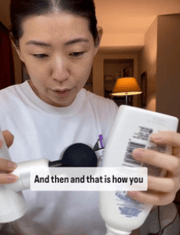What’s the #1 Problem Every American Faces in Australia? One Expat Reveals the Shocking Truth
By
Gian T
- Replies 1
When most people think of Australia, they picture endless sunshine, golden beaches, and a climate that’s warm year-round. But as any long-term resident will tell you, that’s only half the story. While our summers can be scorchers, the Australian winter brings a chill that’s not just felt outside—but right inside our own homes. And for many expats, especially those from colder countries, this comes as a real shock.
Recently, American expat John Pabon, who’s called Melbourne home for the past six years, made headlines for exposing what he calls the 'biggest problem' with living Down Under: the bone-chilling cold inside Aussie houses during winter. And he’s not alone—many newcomers (and plenty of locals!) are left shivering and scratching their heads, wondering why our homes seem so ill-equipped to keep us warm.
Why Are Aussie Homes So Cold?
You might be surprised to learn that, according to the United Nations, Australian homes are among the coldest in the developed world. The World Health Organisation recommends a minimum indoor temperature of 18°C for health and comfort, but a staggering 80% of Aussie homes fall short of this standard during winter. In fact, the average winter temperature inside our homes is just 16.5°C, and in some of the colder states, it can drop as low as 10.9°C!
So, what’s going on? According to John, the problem comes down to 'leaky' houses, substandard construction, and poor insulation. Unlike in Europe or North America, where double-glazing, central heating, and thick insulation are the norm, many Australian homes are built to keep cool in summer, not to trap warmth in winter. The result? Drafts, cold floors, and a constant battle to stay warm.
The Impact on Health and Wellbeing
It’s not just about comfort—living in a cold home can have serious health consequences, especially for older Australians, people with disabilities, and those facing housing insecurity. Cold indoor temperatures can worsen conditions like arthritis, increase the risk of respiratory illnesses, and even impact mental health. As John points out, 'If you’re cold, you’ll be miserable, but if you’re a vulnerable person or younger or sick, a cold house with rising damp won’t be amazing.'
And it’s not just expats who are noticing. One Adelaide Hills resident told the ABC that it was actually warmer in her fridge than in the rest of her house! That’s a chilling thought, literally and figuratively.
How Do Aussies Cope?
If you’ve ever wondered why so many Aussies seem to live in their dressing gowns, ugg boots, and puffer jackets all winter long, now you know! Canadian expat Alexandra Tuohey even dubbed these items 'indoor thermal wear'—a uniquely Australian solution to a uniquely Australian problem. The Oodie (a giant wearable blanket), ugg boots, and puffer jackets have become winter staples in homes across the country.
But it’s not just about what you wear. Aussies have become masters of the winter hack. Some popular tricks include:
- Door snakes: These handy draft stoppers block cold air from sneaking in under doors.
- Bubble wrap on windows: Believe it or not, sticking bubble wrap to your windows can help insulate them and keep the warmth in.
- Layering up: Before you crank up the heater, try adding another layer of clothing or snuggling under a blanket.
- Portable heaters: While not always energy efficient, a small heater can make a big difference in a chilly room.
- Rugs and curtains: Covering bare floors and windows helps trap heat and keep out the cold.
Why Don’t We Just Fix the Problem?
You might be wondering why, in a country as developed as Australia, we haven’t solved this problem. The answer, unfortunately, is money. Retrofitting homes with proper insulation, double-glazed windows, and efficient heating systems is expensive, and for many homeowners and renters, it’s just not feasible. Plus, with our focus on keeping cool in summer, winter warmth has often taken a back seat in home design.
However, there is growing awareness of the issue, and some states are starting to introduce minimum energy efficiency standards for new builds and rentals. But for now, most of us will have to keep reaching for the Oodie and the hot water bottle when the mercury drops.
Tips for Staying Warm This Winter
If you’re dreading another cold Aussie winter, here are a few extra tips to help you stay cosy:
1. Seal up drafts: Use weather stripping or draft stoppers on doors and windows.
2. Close off unused rooms: Only heat the rooms you’re using to save energy and keep the warmth where you need it.
3. Use thermal curtains: These can make a big difference in keeping the heat in and the cold out
4. Warm up your bed: Electric blankets or hot water bottles can make bedtime much more inviting.
5. Move around: Gentle exercise can help get your blood flowing and warm you up from the inside out.
Credit: TikTok
 Have you noticed how cold Aussie homes can get in winter? Do you have any tried-and-true tips for keeping warm, or have you experienced any 'shocking' moments like our expat friends? Share your stories, hacks, and winter survival strategies in the comments below—let’s help each other stay toasty this winter.
Have you noticed how cold Aussie homes can get in winter? Do you have any tried-and-true tips for keeping warm, or have you experienced any 'shocking' moments like our expat friends? Share your stories, hacks, and winter survival strategies in the comments below—let’s help each other stay toasty this winter.
Recently, American expat John Pabon, who’s called Melbourne home for the past six years, made headlines for exposing what he calls the 'biggest problem' with living Down Under: the bone-chilling cold inside Aussie houses during winter. And he’s not alone—many newcomers (and plenty of locals!) are left shivering and scratching their heads, wondering why our homes seem so ill-equipped to keep us warm.
Why Are Aussie Homes So Cold?
You might be surprised to learn that, according to the United Nations, Australian homes are among the coldest in the developed world. The World Health Organisation recommends a minimum indoor temperature of 18°C for health and comfort, but a staggering 80% of Aussie homes fall short of this standard during winter. In fact, the average winter temperature inside our homes is just 16.5°C, and in some of the colder states, it can drop as low as 10.9°C!
So, what’s going on? According to John, the problem comes down to 'leaky' houses, substandard construction, and poor insulation. Unlike in Europe or North America, where double-glazing, central heating, and thick insulation are the norm, many Australian homes are built to keep cool in summer, not to trap warmth in winter. The result? Drafts, cold floors, and a constant battle to stay warm.
The Impact on Health and Wellbeing
It’s not just about comfort—living in a cold home can have serious health consequences, especially for older Australians, people with disabilities, and those facing housing insecurity. Cold indoor temperatures can worsen conditions like arthritis, increase the risk of respiratory illnesses, and even impact mental health. As John points out, 'If you’re cold, you’ll be miserable, but if you’re a vulnerable person or younger or sick, a cold house with rising damp won’t be amazing.'
And it’s not just expats who are noticing. One Adelaide Hills resident told the ABC that it was actually warmer in her fridge than in the rest of her house! That’s a chilling thought, literally and figuratively.
How Do Aussies Cope?
If you’ve ever wondered why so many Aussies seem to live in their dressing gowns, ugg boots, and puffer jackets all winter long, now you know! Canadian expat Alexandra Tuohey even dubbed these items 'indoor thermal wear'—a uniquely Australian solution to a uniquely Australian problem. The Oodie (a giant wearable blanket), ugg boots, and puffer jackets have become winter staples in homes across the country.
But it’s not just about what you wear. Aussies have become masters of the winter hack. Some popular tricks include:
- Door snakes: These handy draft stoppers block cold air from sneaking in under doors.
- Bubble wrap on windows: Believe it or not, sticking bubble wrap to your windows can help insulate them and keep the warmth in.
- Layering up: Before you crank up the heater, try adding another layer of clothing or snuggling under a blanket.
- Portable heaters: While not always energy efficient, a small heater can make a big difference in a chilly room.
- Rugs and curtains: Covering bare floors and windows helps trap heat and keep out the cold.
Why Don’t We Just Fix the Problem?
You might be wondering why, in a country as developed as Australia, we haven’t solved this problem. The answer, unfortunately, is money. Retrofitting homes with proper insulation, double-glazed windows, and efficient heating systems is expensive, and for many homeowners and renters, it’s just not feasible. Plus, with our focus on keeping cool in summer, winter warmth has often taken a back seat in home design.
However, there is growing awareness of the issue, and some states are starting to introduce minimum energy efficiency standards for new builds and rentals. But for now, most of us will have to keep reaching for the Oodie and the hot water bottle when the mercury drops.
Tips for Staying Warm This Winter
If you’re dreading another cold Aussie winter, here are a few extra tips to help you stay cosy:
1. Seal up drafts: Use weather stripping or draft stoppers on doors and windows.
2. Close off unused rooms: Only heat the rooms you’re using to save energy and keep the warmth where you need it.
3. Use thermal curtains: These can make a big difference in keeping the heat in and the cold out
4. Warm up your bed: Electric blankets or hot water bottles can make bedtime much more inviting.
5. Move around: Gentle exercise can help get your blood flowing and warm you up from the inside out.
Credit: TikTok
Key Takeaways
- An American expat in Melbourne has highlighted that Aussie homes are among the coldest in the world, often failing to meet the World Health Organisation’s recommended minimum indoor temperature of 18 degrees Celsius.
- More than 80 per cent of Australian homes don’t reach this temperature during winter, with some states averaging as low as 10.9 degrees indoors, putting vulnerable people at higher risk.
- Poor insulation, leaky construction and substandard building practices are blamed for the chilly indoor conditions, and fixing these issues would require a massive financial investment.
- Aussies commonly use makeshift methods like door snakes, bubble wrap, extra blankets and special indoor thermal wear such as Oodies, ugg boots and puffer jackets to keep warm inside their homes during winter.








